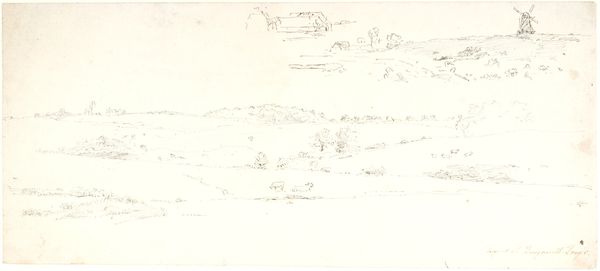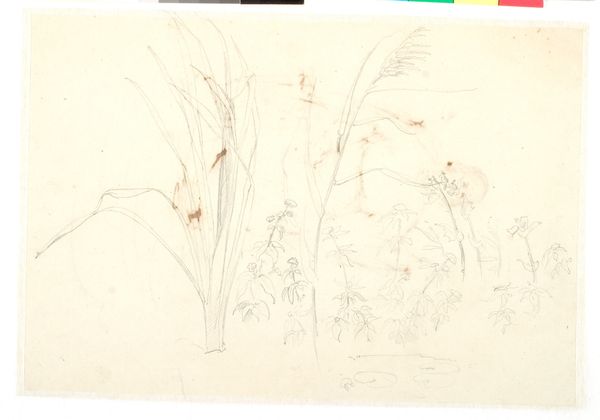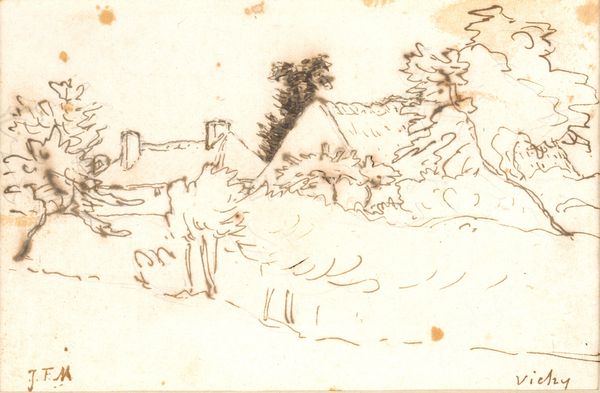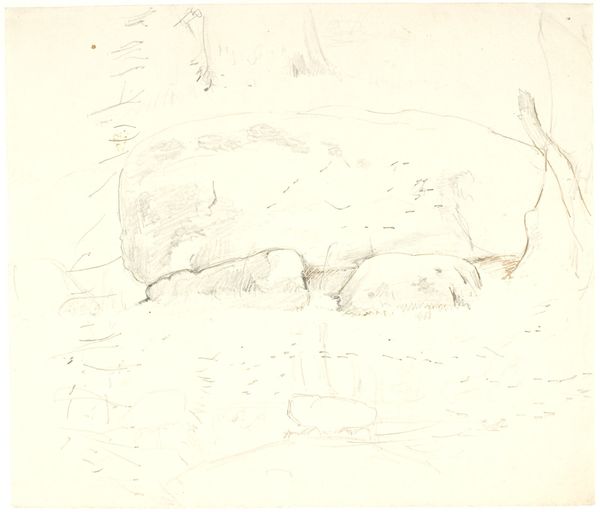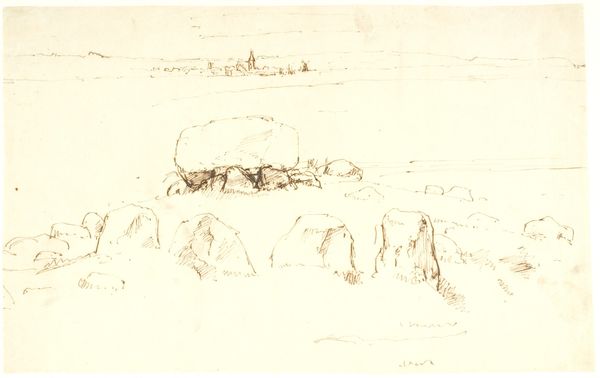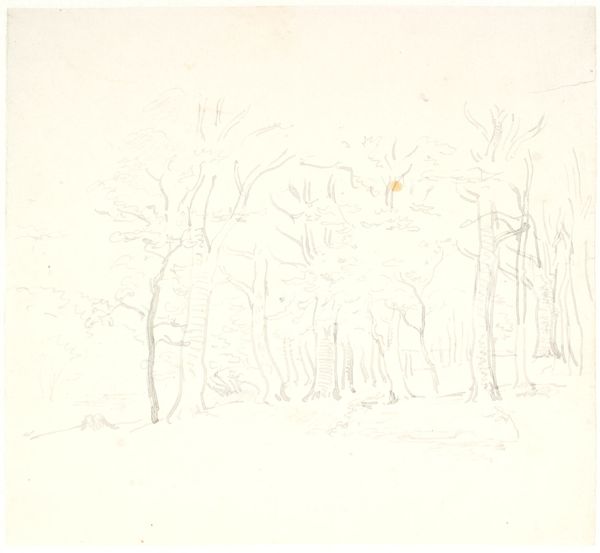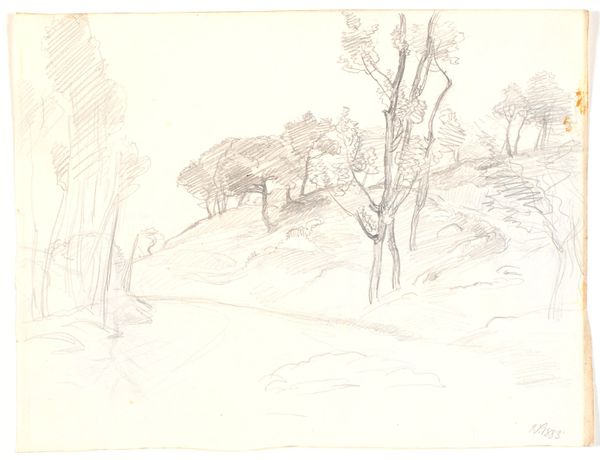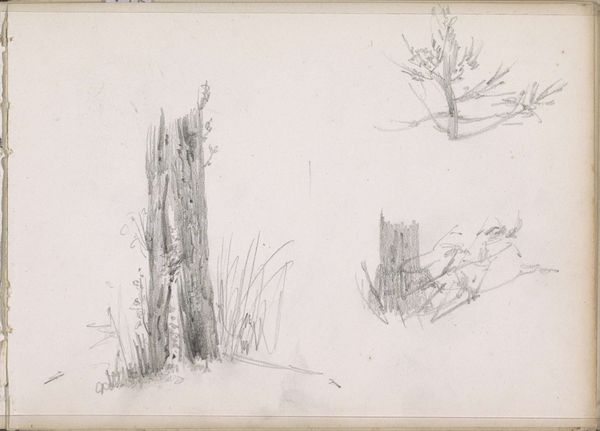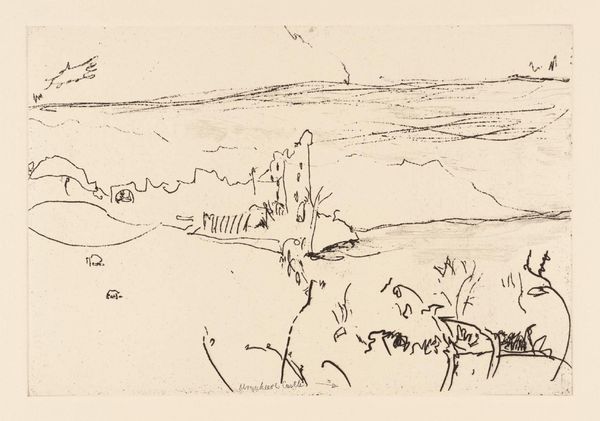
drawing, paper, pencil
#
drawing
#
landscape
#
paper
#
romanticism
#
pencil
Dimensions: 205 mm (height) x 328 mm (width) (bladmaal)
Editor: Here we have "En kæmpehøj på Brandsø," a pencil and paper drawing created by Dankvart Dreyer in 1842. It depicts a landscape with what appears to be large stones in the foreground. It has a very subdued and almost unfinished feel. What jumps out at you in this piece? Curator: The seemingly simple landscape offers a rich study in material production. The pencil, a relatively new technology at the time, enabled Dreyer to quickly capture the scene. Note the stark contrast between the smooth paper and the rough strokes. The monument itself, "kæmpehøj," literally giant hill, hints at a pre-industrial society that invested labor into shaping the landscape itself. Editor: That’s a very different perspective than I had. I was focused on the artistic choices. Why focus on the pencil and the hill? Curator: Because the pencil and the monument *are* the artistic choices! The artist is selecting a new industrial material, the pencil, to represent a monument to pre-industrial labor. This piece allows us to contemplate how modes of production are represented, consumed, and valued. How the past becomes a commodity. Editor: So, by focusing on the materials and the landscape modification, you're connecting it to broader economic and social contexts of the time? Curator: Precisely. It’s about questioning the romanticized vision of nature so prevalent at the time. Instead, Dreyer shows us how human actions—both past and present—shape our perception and relationship with the environment. What are the economic underpinnings of our current cultural relics, and what methods do we use to replicate these meanings? Editor: That definitely gives me a lot to think about regarding the artmaking process itself and the impact that material choices can have on a work's overall meaning. Curator: Indeed, thinking about the "how" is just as important as the "what" when examining a work.
Comments
No comments
Be the first to comment and join the conversation on the ultimate creative platform.
